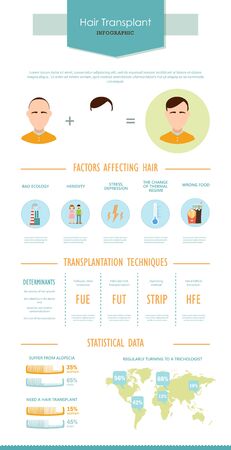Introduction to CoolSculpting and Its Popularity
CoolSculpting has quickly become a household name across the United States, especially among those seeking non-invasive ways to slim down and contour their bodies. But what exactly is CoolSculpting, and why is it making such waves in the world of cosmetic treatments? Simply put, CoolSculpting is an FDA-cleared fat reduction procedure that uses controlled cooling technology to target and eliminate stubborn fat cells beneath the skin—without surgery, needles, or downtime. The science behind CoolSculpting, known as cryolipolysis, allows for precise targeting of fat pockets that just won’t budge despite diet and exercise. Its popularity has soared thanks to its convenience, minimal discomfort, and proven results, making it a go-to option for men and women looking for an effective yet low-commitment solution to refine their shape. With more Americans prioritizing wellness and self-confidence, it’s no surprise that CoolSculpting continues to gain traction as a top choice for body contouring.
Myth: CoolSculpting Is a Weight Loss Solution
One of the most common misconceptions about CoolSculpting is that it’s a magic bullet for weight loss. In reality, CoolSculpting is not designed to help you shed significant pounds or serve as an alternative to traditional weight loss methods like diet and exercise. Instead, this non-invasive procedure is intended for body contouring—helping people target and reduce stubborn pockets of fat that just won’t budge, even with a healthy lifestyle.
Let’s break down the difference between weight loss and fat reduction:
| Weight Loss | CoolSculpting | |
|---|---|---|
| Primary Purpose | Reduce overall body weight | Target specific areas for fat reduction |
| Results Visible On | Bathroom scale | Body shape and contours |
| Method | Diet, exercise, medical treatments | Cryolipolysis (fat freezing) |
| Best For | People with excess body weight or obesity | Individuals near their ideal weight with localized fat deposits |
If you’re looking for a way to drop multiple dress sizes or significantly lower your BMI, CoolSculpting isn’t the answer. However, if you’re close to your goal weight but have areas like love handles, under-chin fat, or thigh bulges that won’t respond to workouts, CoolSculpting can help refine your silhouette. Think of it as a finishing touch rather than a shortcut to major weight loss.

3. Myth: CoolSculpting Results Are Instant
One of the most common misconceptions about CoolSculpting is that you’ll see dramatic results immediately after your appointment. While it’s tempting to hope for an overnight transformation, the truth is a bit more nuanced. CoolSculpting works by freezing and breaking down fat cells, which are then naturally eliminated by your body over time.
Understanding the Realistic Timeline
It’s important to set realistic expectations when considering CoolSculpting. After your treatment session, you won’t notice much difference right away. This is because your body needs time to process and remove the treated fat cells. Most people begin to see changes as early as three weeks post-treatment, but the most noticeable results typically appear between one to three months.
The Body’s Natural Process
Your lymphatic system gradually flushes out the dead fat cells, leading to a slow and steady reduction in fat in the treated area. This natural elimination process ensures a more subtle change, helping you avoid the “sudden” look that sometimes comes with other cosmetic procedures.
Patience Pays Off
If you’re thinking about getting CoolSculpting before a big event, plan ahead! Give yourself at least two to three months if you want to show off your final results. Remember, while patience is required, the gradual improvement often looks more natural and can be easier to maintain in the long run.
4. Myth: The Procedure Is Painful and Risky
When considering CoolSculpting, many Americans worry about pain and potential risks associated with the treatment. However, the reality is that CoolSculpting is a non-invasive procedure specifically designed to minimize discomfort and ensure safety for patients. Let’s break down what you can actually expect during and after your session.
The Actual Sensation During Treatment
Most patients describe the sensation during CoolSculpting as mildly uncomfortable at first but not painful. Here’s what you might experience:
| Sensation | When It Occurs | Description |
|---|---|---|
| Cold/Chilling | First few minutes | Intense cold feeling on the treated area |
| Tingling/Numbness | During treatment | Numbness sets in as the area becomes desensitized |
| Mild Tugging or Pinching | Throughout | Suction applicator pulls tissue into cooling panels |
Aftercare & Possible Side Effects
The majority of people return to their normal activities right after a session with no downtime. Some may experience temporary side effects, but these are typically mild and resolve within days or weeks.
| Possible Side Effect | Typical Duration |
|---|---|
| Redness or Swelling | A few hours to a few days |
| Numbness or Tingling | A few days to weeks |
| Mild Bruising or Firmness | A few days to weeks |
Safety Measures & FDA Clearance
CoolSculpting is FDA-cleared for fat reduction in several areas of the body, including the abdomen, flanks, thighs, and more. Providers follow strict protocols to ensure safety. Always choose a licensed and experienced provider who uses genuine CoolSculpting equipment for optimal results and minimal risk.
Key Takeaway:
The belief that CoolSculpting is painful and risky simply doesn’t match the facts. Most patients report manageable discomfort and minimal side effects, with serious complications being extremely rare when performed by trained professionals. If you have concerns about pain or risks, consult your provider—they’ll guide you through what’s normal and how they keep you safe every step of the way.
5. Myth: CoolSculpting Works for Everyone
It’s a common misconception that CoolSculpting is a one-size-fits-all solution for fat reduction. In reality, not everyone is an ideal candidate for this treatment. CoolSculpting is best suited for healthy adults who are close to their goal weight but struggle with stubborn pockets of fat that don’t respond to diet and exercise. These “trouble spots”—like love handles, belly pooch, or thigh bulges—are where CoolSculpting can make a noticeable difference.
Who Is Most Likely to Benefit?
The ideal candidates are individuals with a Body Mass Index (BMI) under 30 who have realistic expectations about the results. If you’re looking for subtle sculpting rather than dramatic weight loss, CoolSculpting could be right up your alley. The procedure is designed for those who want to enhance their natural shape by targeting specific areas rather than shedding significant pounds.
Who Might Not Be a Good Fit?
CoolSculpting isn’t intended as a weight-loss solution or an alternative to healthy lifestyle choices. People who are significantly overweight or obese may not see the results they’re hoping for, and other options might be more appropriate. Additionally, if you have certain medical conditions—such as cryoglobulinemia, cold agglutinin disease, or paroxysmal cold hemoglobinuria—CoolSculpting is not recommended. It’s also important to note that the treatment doesn’t address loose skin or cellulite.
The Bottom Line
Consultation with a qualified provider is essential to determine if CoolSculpting matches your goals and health profile. They’ll help you understand what the procedure can—and cannot—do so you can make an informed decision based on facts, not myths.
6. Separating Fact from Fiction: What You Should Really Expect
When it comes to CoolSculpting, separating fact from fiction is key to setting realistic expectations. Based on scientific research and clinical studies conducted in the United States, here’s what you need to know about what CoolSculpting can—and can’t—do for you.
What the Science Says
CoolSculpting is an FDA-cleared, non-invasive procedure designed to target and eliminate stubborn fat cells by freezing them. Multiple clinical studies have shown that patients can expect a visible reduction of fat in treated areas—typically around 20-25% per session. However, results vary depending on individual body types, the area treated, and adherence to post-treatment recommendations.
No Magic Bullet—But Real Results
It’s important to remember that CoolSculpting isn’t a miracle weight-loss solution or a substitute for healthy lifestyle choices. It’s most effective for people who are close to their ideal weight but struggle with pockets of fat resistant to diet and exercise. While some changes may be visible as early as three weeks after treatment, optimal results are usually seen after two to three months.
The American Experience
Across the U.S., patients report satisfaction with their results when they understand what CoolSculpting realistically offers: gradual, natural-looking fat reduction with little to no downtime. Side effects are generally mild and temporary, such as redness, swelling, or numbness at the treatment site.
Summing Up: What You Should Expect
If you’re considering CoolSculpting, base your expectations on facts—not myths. You can expect a safe procedure supported by science, modest but real improvements in body contour, and minimal recovery time. Consult with a qualified provider who understands your goals and can guide you through the process tailored to your needs. Ultimately, informed decisions lead to the best outcomes—and help you avoid falling for common misconceptions about CoolSculpting.


